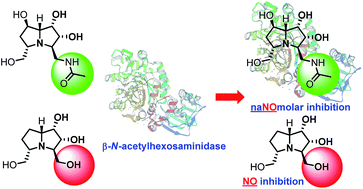Amino-functionalized iminocyclitols: synthetic glycomimetics of medicinal interest
Abstract
Carbohydrate mimetics play vital roles in various cell-mediated processes due to their structural resemblance to natural sugars but properties quite distinct from them. This unique combination has made them attractive targets for synthesis, exploring their biological applications, and understanding their structure–activity relationship at molecular levels, that would eventually help in the development of novel small molecule drugs. Iminosugars, also termed iminocyclitols and, often erroneously azasugars, constitute the most attractive glycomimetics as they find significant applications as drug candidates. Examples of iminocyclitol based marketed drugs include Miglustat and Miglitol. Continued research in this area has led to the discovery that synthetic analogues obtained through replacement of one or more of the hydroxyl groups of naturally occurring iminocyclitols with amino functionalities, termed as amino-iminocyclitols, display profound effects on their biological activities, in terms of both selectivity and specificity. Such molecules are expected to be potential lead against viral infections, osteoarthritis, tuberculosis, diabetes, bacterial infections, lysosomal storage disorders etc. due to which chemistry and biology of amino-iminocyclitols have emerged as a fertile area for research. This review covers all the available synthesis of various amino-iminocyclitols and their biological activities. The structure–activity relationship of these molecules with various glycosidases would provide opportunities for the design and development of novel molecules with improved inhibition properties and spur further research towards carbohydrate based drug discovery.


 Please wait while we load your content...
Please wait while we load your content...